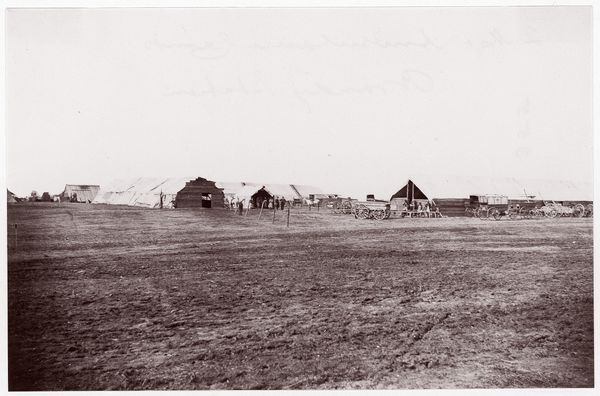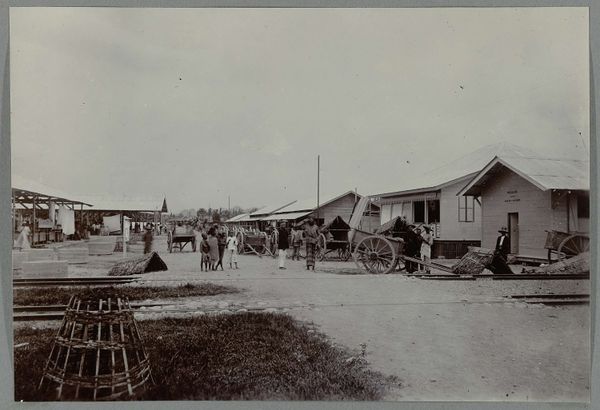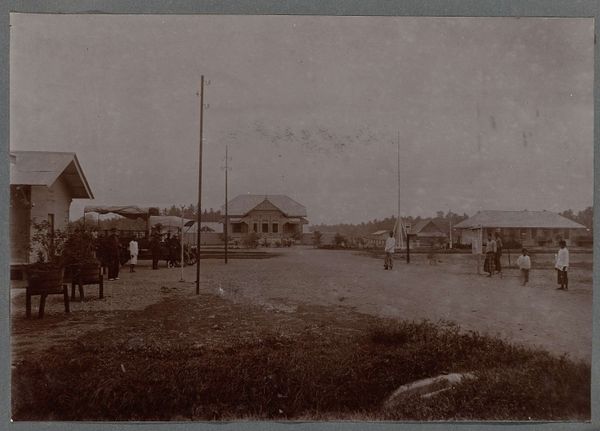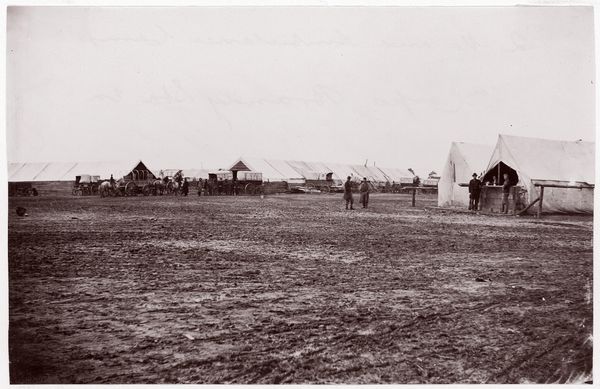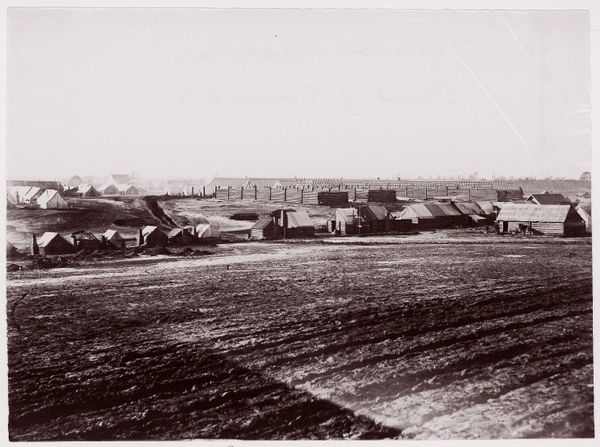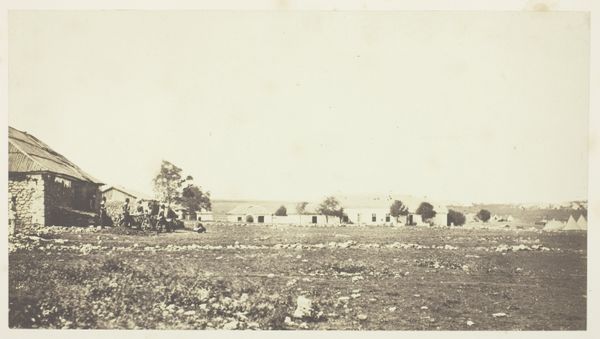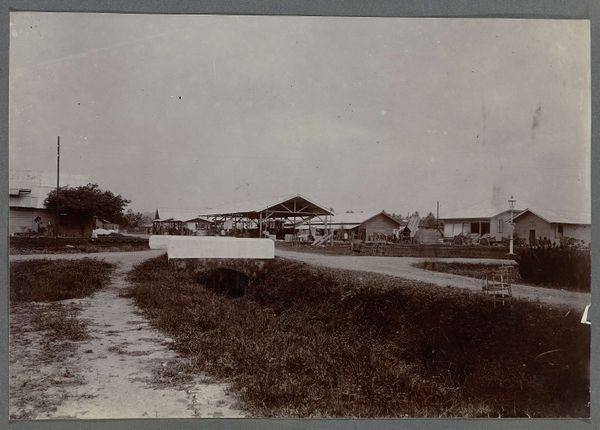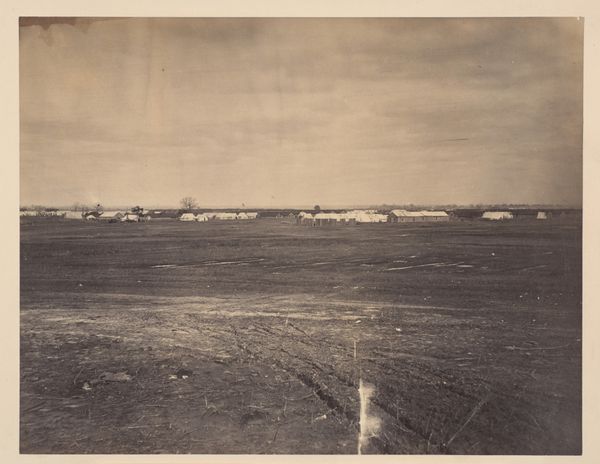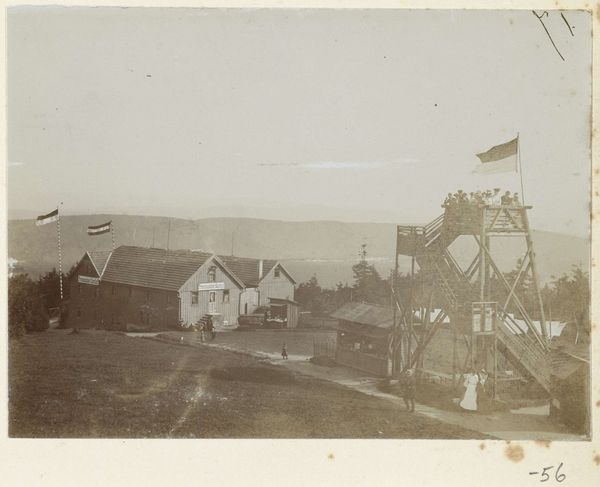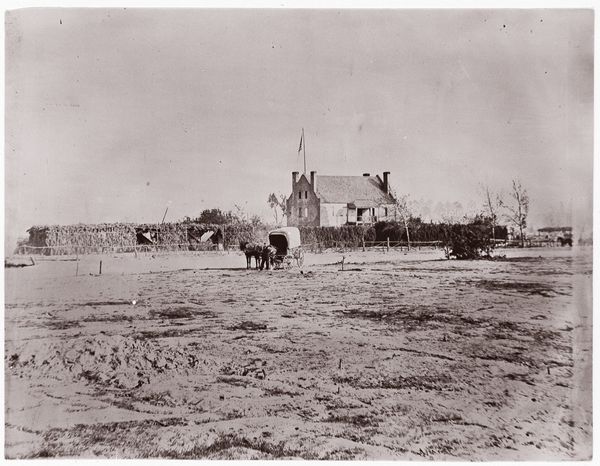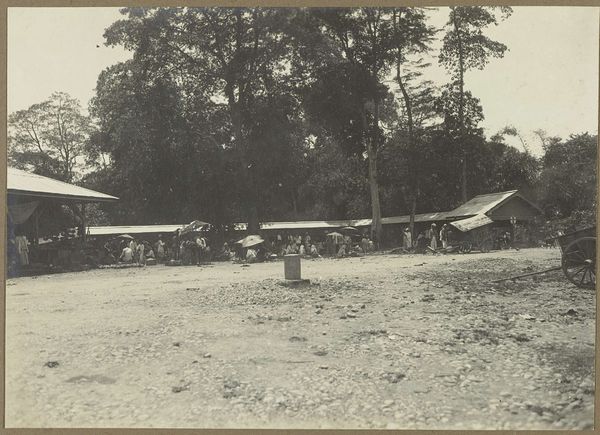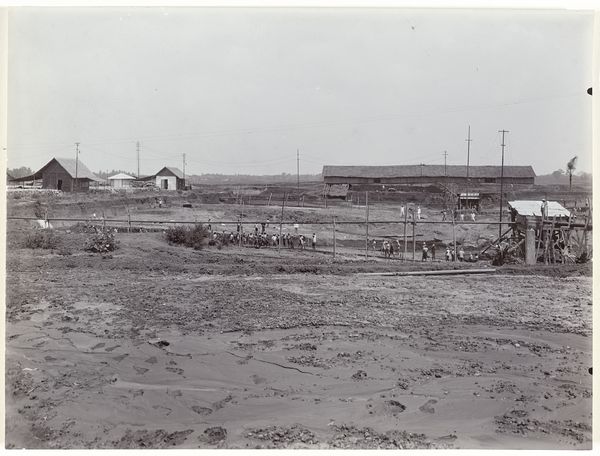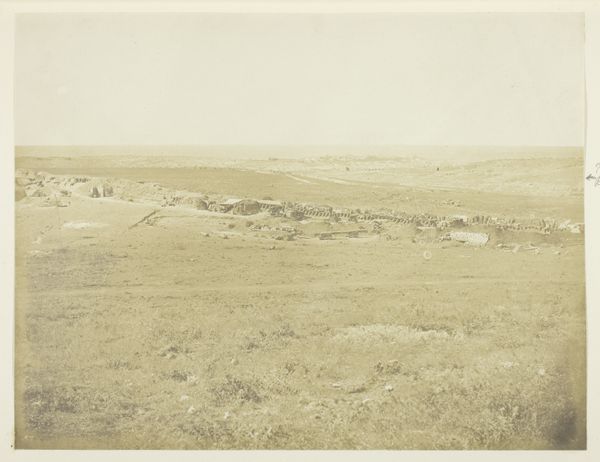
photography
#
muted colour palette
#
natural tone
#
landscape
#
photography
#
orientalism
#
muted colour
Dimensions: height 138 mm, width 200 mm
Copyright: Rijks Museum: Open Domain
Editor: So, this photograph, titled "Spoorweg in Bireuen," taken sometime between 1903 and 1913 by an anonymous photographer, shows what seems to be a train station and a gathering of people. It feels incredibly staged and distant. What story do you think it's trying to tell? Curator: I see this photograph as a potent artifact of colonial power. The "Spoorweg," or railway, speaks directly to the Dutch colonial presence and their attempts to control and exploit resources in regions like Bireuen, now part of Indonesia. Notice the stark contrast between the meticulously built colonial architecture and what appears to be a local community standing somewhat passively by. How does the composition strike you? Editor: It's really separated. Those buildings on the left feel so formal and imposed, and then the people on the right, particularly those dressed differently, appear like they’re almost…observed? Curator: Exactly. The photograph doesn't just depict a railway; it frames the colonial project itself. The careful composition places the viewer in a position of power, subtly reinforcing the racial hierarchy. The muted tones and static arrangement evoke a sense of control and order. Consider, what is not shown is just as important as what is included. What narratives are deliberately obscured? Editor: That’s powerful. The hidden perspectives are just as important. The everyday life and experiences of the people living there seem completely ignored. Curator: Precisely. Think about how images like this were circulated, back in Europe reinforcing skewed ideas about Southeast Asia and solidifying support for continued colonial rule. It’s a reminder that photography, especially in this era, wasn't merely about capturing reality but actively shaping perceptions. Editor: I never thought of a simple photograph being so loaded with those layers of societal commentary and imposed power structures. It provides an essential understanding of the cultural landscape then. Curator: And that's the crucial function of the historian, isn't it? To illuminate the unseen and unheard.
Comments
No comments
Be the first to comment and join the conversation on the ultimate creative platform.
